A Systematic Literature Review of Vessel Anomaly Behavior Detection Methods Based on Automatic Identification System (AIS) and another Sensor Fusion
Volume 5, Issue 2, Page No 287-292, 2020
Author’s Name: Nova Muhammad Ferlansyaha), Suharjito
View Affiliations
Department of Computer Sciences, BINUS Graduate Program-Master of Computer Sciences, Bina Nusantara University, Jakarta, Indonesia, 11480
a)Author to whom correspondence should be addressed. E-mail: ferlansyah@rocketmail.com
Adv. Sci. Technol. Eng. Syst. J. 5(2), 287-292 (2020); ![]() DOI: 10.25046/aj050237
DOI: 10.25046/aj050237
Keywords: Automatic Identification System, Anomaly Detection, Vessel traffic Behavior
Export Citations
The high flow of vessel traffic affects the difficulty of monitoring vessel in the middle of the sea because of limited human visibility, occurrence of vessel accidents at the sea and other illegal activities that illustrate abnormal vessel behavior such as oil bunkering, piracy, illegal fishing and other crimes that will continue and will certainly have an impact on losses in several aspects. the author collects studies using Automatic Identification System (AIS) data as a basis for analysis to see the behavior of vessels at the sea, in addition to that AIS data can also be combined with other sensor data to strengthen monitoring of vessel movements at the sea, this is very supportive in detecting the anomalous behavior of vessel that often occur outside the reach of human vision or the sea patrol on duty. This paper uses the Systematic Literature Review (SLR) method in identifying, evaluating, and interpreting various methods of studies related to vessel anomalous behavior at the sea the author highlights several methods that are always applied to studies that already exist in detecting vessels anomalous behavior, the study detected the movement of vessel with AIS data from the history of vessel locations and fusion with another sensor in seeing movements of abnormal vessel behavior through patterns that were formed. This paper refers to various studies and reviews some of them about the use of AIS track data history in vessel including combining with other data to detect anomalous behavior of vessel, the results of the analysis are used to find out activities that have the potential for illegal activities or other crimes that can be detrimental and can be used as decision making, the authors hope the results of this paper can be an option to be applied to the surveillance system of vessel around the territorial waters in order to guard against crime and other illegal behavior
Received: 10 October 2019, Accepted: 04 March 2020, Published Online: 20 March 2020
1. Introduction
The development of information technology in the maritime sector for vessel behavior is monitoring, has been recently developed to facilitate monitoring of vessels in the sea waters. Automatic Identification System (AIS) is an important part of supporting the safety of vessels in the sea when sailing. For all transport vessels with a load of 300 Gross Tonnage (GT), passenger vessels (domestic and international lines), and other types of vessels with international lines required to use AIS, prevent collision accidents between vessels and seeing the pattern of vessel movements [24].
Comprehensive supervision needs can be done directly by using physical observation at the sea, but direct observation has certain weaknesses when it’s carried out, such as the availability of sea transportation fleets and crew by preparing high operational costs, this is very important to be the main concern in supervising and maintaining very wide waters and need new ways of monitoring vessels at the sea. In addition to physical observations and movement patterns, the vessel has an identity that can provide information about the condition and origin of the vessel, there needs to be rules regarding the use of the identity of the vessel as one of the supporting feasibility of vessels in sailing by standardization in the form of legality [15].
Many vessels which certainly enter the obligation to use the AIS device for safety at the sea, it is difficult to know the route of the tanker when it is far from the shore or the mainland, the extent of sea waters in Indonesia is a condition as a problem in monitoring activities of vessels at the sea, a method is needed in monitoring the vessel so it can be monitored properly.
Generally the vessel sails by using a predetermined route, but in traffic conditions in the sea waters many choices of paths can be used, see the anomalies of vessel movements can be seen from the density of vessel traffic [14], from this method we can see the position of the vessel around the lane or outside of the lane. The potential for vessels to do anomalies is very large because the number of vessels passing in the sea waters is very much a concentration of areas that become centers of supervision activities, in this case, areas that often occur piracy, accidents or special areas that deserve attention, or in terms of another is the Area Of Interest (AOI).
2. Basic Concept
2.1. Automatic Identification System (AIS)
The factor of increasing sea accidents is that vessels are not identified through electronic navigation devices that can provide information on the location, vessel speed, direction of the vessel’s direction, and vessel’s identity. In 2004 AIS was implemented which was primarily aimed at avoiding collisions and accidents, besides being a supporter of information for coastal operators it was also used to monitor vessel traffic as a marine navigation for vessel supervision [2].
- Inetrnational Maritime Organization (IMO)
In 1996 the priority of human safety on the vessel became high because of accidents recorded 3559 events at that time, the legality of the vessel became one of the first steps in detecting and regulating various information on the condition of the vessel and vessel activity information by their functions and capabilities [16]. Also, IMO is very focused on vessel safety regulations at the sea, and IMO numbers are listed on electronic data variables Automatic Identification System (AIS) through the rules of International Telecommunications Union (ITU) with data sent via radio packages transmitted by encapsulation standards according to the National Marine Electronics Association (NMEA) 0183 [2].
- Vessel Anomaly Behaviour
Traffic movements of vessels in the sea in the recent digital era are very much used for various activities that can be used as supporting data to make decisions, from various types of vessels that cross-sea waters, utilization of vessel movement data stored for a certain period when displayed, can shows the behavior patterns of vessels that vary from the various travel routes that have been passed. The pattern of normal vessel behavior is abnormal, or it can be called anomaly which has own pattern which can be used as an analysis material for vessel movement designations
3. Proposed Methodology
The Biolchini Systematic Literature Review (SLR) method
involves identifying, evaluating, and interpreting all available and relevant research, through questions from the research topics and phenomena favored by researchers. Individual studies that contribute to systematic studies are called primary studies, while systematic studies are themselves forms of secondary studies.
Biolchini separated the guidelines for implementing SLR in 3 phases, namely: (i) planning; (ii) execution; (iii) analysis of the results.
During the literature review, there are 2 checking areas, namely in the planning protocol and execution protocol area. If the problems are found in each of the checking areas, the reviewer must return to the previous stage.
 Figure 1: Process in carrying out SLRs [11]
Figure 1: Process in carrying out SLRs [11]
3.1. Planning Review
The planning steps consist of [11]:
(i) Formulating questions;
(ii) Selection of data sources and search strategies;
(iii) Selection of studies.
Each step will be described as follows:
- Formulate Question
The focus of this study is to find out how to detect the vessel anomalies by using AIS data. For this reason, many questions are designed to obtain answers from the results of this literature review.
- Question 1 (Q1). In the publication forum, what are the discussions on how to detect vessel anomalies?
- Question 2 (Q2). What methods are often used to detect vessel anomalous behavior?
- Question 3 (Q3). Developmental trend method for detecting vessel anomalous behavior in the last 5 years?
- Question 4 (Q4). What is the contribution of each of the ways to detect vessel anomalous behavior?
- Selection of Data Sources and Search Strategies
In this literature review the data sources that will be used are available papers on the website page:
(1) Elsevier (http://www.elsevier.com);
(2) The Journal of Navigation (https://www.cambridge.org);
(3) IEEE (https://ieeexplore.ieee.org);
(4) Reasearch Gate (https://www.researchgate.net).
The more data sources used, the greater the chance to find the appropriate literature.
The strategy in conducting searches is built through determining keywords and synonyms from the focus of the study. Keywords and synonyms can be connected to logical conector OR and AND, as follows:
(AIS OR “Automatic Identification System” OR “AIS vessel movement”)AND(“vessel anomaly behaviour” OR “vessel anomaly detection” OR “vessel anomaly tracking” OR “ais vessel” OR “vessel movement”).
Search all databases: Elsevier, Cambridge, IEEE, Researchgate.
- Paper Selection
The destination website search engine is likely to produce a large number of papers. Though not necessarily all the papers are relevant to the purpose of the study. Therefore, further, identification is needed to obtain papers that are primary studies. Identification can be done by applying inclusion and exclusion criteria. The application of inclusion and exclusion criteria will guarantee that the paper used is a paper that truly fits the context of the study.
Inclusion criteria:
- Paper that explains concepts, benefits, techniques, methods, strategies and everything in detecting vessel behavior
- Papers presented in English.
Exclusion Criteria:
- Papers that only focus on the discussion of AIS.
2.Papers that only focus on the discussion of Anomaly Detection.
The procedure for selecting papers is done by speed reading techniques for all primary study candidates. Speed reading is reading the abstraction section of the available paper. Furthermore, based on the inclusion and exclusion criteria made, it can be determined whether the paper can be used as the primary study.
- Execution
Based on the planned review that has been prepared, the next step is to execute the plan. The execution of the search string on the four pages of the website which is used as the source of the data produces 64 papers which are the primary study candidates as Table.
Table 1: Related or No Related Articles
| No. | Database | Related | No. Related |
| 1 | IEEE | 6 | 15 |
| 2 | ScienceDirect | 9 | 22 |
| 3 | ACM Digital Library | 3 | 9 |
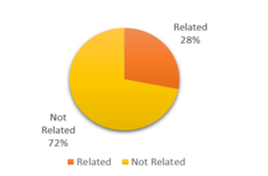 Figure 2: Based on related and unrelated primary journal studies
Figure 2: Based on related and unrelated primary journal studies
The total number of 64 publications found 72% related and 28% not related to Figure 2 related to the domain being searched, this result can answer question Q1 to map important data sources that can be used for further studies. Publications that are following the domain of 72% including journals and conferences.
The further inclusion criteria are applied and exclusion by reading the abstraction part of all primary study candidates. Application of criteria inclusion and exclusion produced as many as 18 journals that related
4. Results and Discussion
After knowing the results conducted through primary studies originating from the publication forum, there were 18 in accordance with the domains of 17 journals and 1 conference in figure 3. From the results of the primary study, we can see that few related domains discussing Vessel Anomaly Behavior Detection Methods Based on Automatic Identification System (Q1) in several source database forums.
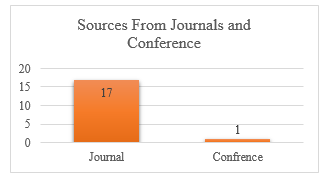 Figure 3: Based on related sources from journals and Conferences studies
Figure 3: Based on related sources from journals and Conferences studies
Table 2 : Related Journals and Conferences
| Journal Databases | Year of Publication | ||||
| 2013 | 2014 | 2015 | 2017 | 2018 | |
| Institute of Electrical and Electronics Engineers (IEEE) | J01. [7] J02 [9] |
J01. [23] J02. [28] |
J01 [22] J02 [1] |
||
| Science Direct | J01. [26] J02. [5] |
J01. [4] J02 [12] |
J01 [6] | J01. [21] J02. [33] J03. [32] J04. [29] |
|
| Association for Computing Machinary (ACM) | C01. [17] | J01. [18] | J01 [30] | ||
4.1. Question 1 (Q1)
Conducting studies of various publications obtained from various sources to look for methods related to the anomalous of the vessel’s behavior, the selection of methods is carried out by using the biolchini method to include grouping sources that are related and not related.
From the other side, the use of human decisions is part of a process that cannot be avoided if a wise decision is needed, not only to determine correctly or wrongly, humans here as operators to take an important role in determining the final results of decisions taken based on events and information received through the system or direct observation. In the Figure 4, the Bayesian Network method functions to produce decisions from the conditions encountered [3]. The loss of AIS information in the search for the position of the vessel being monitored is a common thing, whether it occurs because of intentional or not, such as the vessel operator accidentally turns off the AIS device [3] where is installed in the vessel or the AIS device is not functioning properly can occur but this needs to be a serious concern because if the vessel is in the middle of the sea and far from the human view, the AIS information is very useful to see the position, and movement of the vessel.
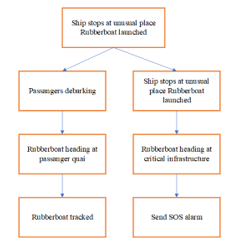 Figure 4: Possible scenario model of a Bayesian network [17]
Figure 4: Possible scenario model of a Bayesian network [17]
Information contained in the AIS Data is in the form of location data (longitude and latitude), time stamp, speed over ground (SOG), course over ground (COG), heading, vessel ID (MMSI, IMO, Call Sign, Flag), and others [29]. One of the anomalous activities on a vessel can be known through, not detected by the vessel with signal loss or not receiving AIS information from the vessel, it is necessary to detect the loss of vessel AIS information by combining other data to see from observations of synthetic aperture radar (SAR), if AIS information data is not detected. Figure 5 shows how to combine information through AIS and SAR data to detect the position of the vessel.
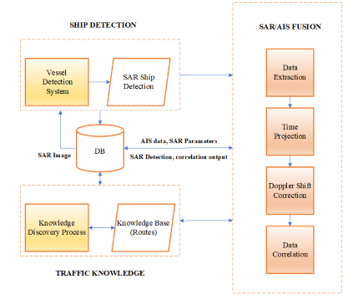 Figure 5: Combine data SAR and AIS [17]
Figure 5: Combine data SAR and AIS [17]
Detecting anomalies can also be seen from the trajectory that is traversed using the history of stored data then compared to using normal trajectory data as a reference for determining whether the vessel is conducting anomalous movements or not, this is can answer question Q2 [23] [12] [26] [33],
4.2. Question 2 (Q2)
The method that describes the route to be used as a detection of vessel behavior through travel history and movement patterns of the vessel, according to P. Fu et al. vessel behavior analysis detects the movement of vessels out on the trajectory path [23] that is normally traversed. The data source used in the method of using the vessel trajectory is using AIS historical data.
Besides detecting anomalies can determined also through the estimated hours of arrival of the vessel, related to the delay of the vessel which can cause concern about the activities of the vessel which, of course if it is in the middle of the sea [1], in 2019 the prediction method for vessel delay by detecting the prediction of vessel arrival time greatly helped to detect vessel anomalies from analysis through time (Q3).
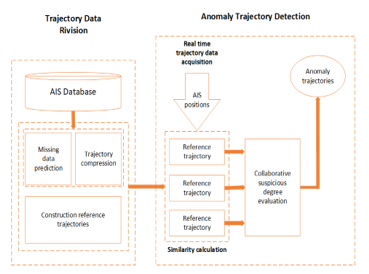 Figure 6: Framework movement trajectory path [23]
Figure 6: Framework movement trajectory path [23]
4.3. Question 3 (Q3)
Trends use historical data of ship travel and movement based on time passed, a valid approach to finding areas where ships repeatedly show changes in direction [22], and a combination of some data other than the AIS sensor, one of which is to combine data, i.e. synthetic aperture radar (SAR) to detect the position of ships at the sea using radar sensors [7].
In addition to monitoring vessels, observing activities through monitoring anomalous activities can also be used in certain areas of the intensity of vessels carrying out activities in the area based on certain times and seasons [6]. Each method has the character and way of detecting vessel anomalies, most of which use historical data to see the movement patterns of vessels from crossed trajectories, use prediction of vessel arrival times, and analyze the consistency of AIS signals sent, this is very helpful in investigating incidents that have occurred and is likely to be used as information for deciding detecting vessel anomalous behavior, in conditions of oil smuggling, vessel hijacking and others (Q4).
4.4. Question 4 (Q4)
The contribution made is to make it easier for the monitoring officer to know the activities of the ship through the movement or position of the ship at the sea. From the various methods reviewed in this paper, it is explained that monitoring by relying on limited human visibility will be very difficult if the ship in the middle of the sea is difficult to know the movement, the method that has been conveyed from several studies above explained related to utilizing AIS data and combining data using other sensor data to capture the activities of ships at the sea, of course will be very helpful in analyzing and making decisions of events that are caught to be able to provide recommendations if they occur anomaly in ship behavior, interested parties can use the above methods as a reference tool in detecting the behavior of ship anomalies at the sea.
5. Conclusions
Vessel anomalous behavior generally performs unusual activities when the vessel travels from point A to point B, of course, the factor of determining anomalies is very varied, refering for not detection of the AIS signal of the vessel, unusual vessel movements, estimated time arrival, the vessels are in the region outside the usual trajectory, changes or shifts in the direction of the vessel with addition significant speed, and other factors not followng the actual shape or form such as anomalies to the identity of the vessel, or the vessel is not in other normal conditions. From the results of a survey conducted that the study of literature generally states that anomalies are carried out through activities or conditions not in a state of reasonableness, it can be used to determine what is happening in the field, based on methods carried out to detect vessel anomalous behavior, of course, observations the behavior of vessels with the behavior of land vehicles is very different in terms of location and term that can still be reached, compared to the unstable sea conditions and the vast expanse of sea.
From this literature study, the researcher concludes that from various methods used to detect anomalies, it is very helpful for surveillance operators to supervise ships without having to check vessels one by one with heavy traffic conditions, and the number of ships that are not small as initial detection, related to this role humans are still used as final decision-makers to compare with data and other information because there are no standard categorizations of anomalies on ships and are listed as general references, and high considerations because they involve the law. The anomaly detection method is also useful for the safety of the vessel at the sea protected from collisions between vessels and prevented illegal activity
- A. Alessandrini, F. Mazzarella, and M. Vespe, (2019) “Vessel Tracking Data,” IEEE Trans. Intell. Transp. Syst., vol. 20, no. 1, pp. 7–15
- Bekkadal, F. (2009, October). Emerging maritime communications technologies. In Intelligent Transport Systems Telecommunications, 358-363.
- Carthel, C. C. (2007). Multisensor tracking and fusion for maritime surveillance. In Information Fusion, 1-6.
- D. Zissis, E. K. Xidias, and D. Lekkas, (2015) “A cloud based architecture capable of perceiving and predicting multiple vessel behaviour,” Appl. Soft Comput. J.
- E. Osekowska, H. Johnson, and B. Carlsson, (2014) “Grid size optimization for potential field based maritime anomaly detection,” Transp. Res. Procedia, vol. 3, no. July, pp. 720–729.
- E. Osekowska, H. Johnson, and B. Carlsson, (2017) “Maritime vessel traffic modeling in the context of concept drift,” Transp. Res. Procedia, vol. 25, pp. 1457–1476.
- F. Mazzarella, M. Vespe, and C. Santamaria, (2015) “SAR Vessel Detection and Self-Reporting Data Fusion Based on Traffic Knowledge,” IEEE Geosci. Remote Sens. Lett., vol. 12, no. 8, pp. 1685–1689.
- Fawcett, T. (2006). An introduction to ROC analysis. Pattern recognition letters, 861-874
- F. Papi et al., (2015) “Radiolocation and tracking of automatic identification system signals for maritime situational awareness,” vol. 9, no. July 2014, pp. 568–580.
- Garuba, D. S. (2010). Trans-border economic crimes, illegal oil bunkering and economic reforms in Nigeria. Policy brief series, 15
- J. Biolchini, P.G. Mian, A.C.C. Natali, G.H. Travassos. (2005), Systematic Review in Soft-ware Engineering, Technical Report RT-ES 679/05, Federal University of Rio de Janeiro, Rio de Janeiro, RJ, Brazil.
- J.-H. OH, K. KIM, and J.-S. JEONG, (2015) “A Study on the Risk Analysis based on the Trajectory of Fishinng Vessels in the VTS Area*,” UMK Procedia, vol. 2, pp. 38–46.
- Juba, B. M.-D. (2015, February). Principled Sampling for Anomaly Detection. In NDSS.
- Kowalska, K. &. (2012). Maritime anomaly detection using Gaussian Process active learning. In Information Fusion (FUSION), 1164-1171.
- Laxhammar, R. F. (2009, July). Anomaly detection in sea traffic-a comparison of the gaussian mixture model and the kernel density estimator. In Information Fusion, 2009, 756-763.
- Li, K. X. (2001). Maritime legislation: new areas for safety of life at sea. Maritime Policy & Management, 225-234.
- L. Rothkrantz and K. Scholte, (2013) “A Surveillance System of a Military Harbour Using an Automatic Identification System,” pp. 169–176.
- L. Zhao, (2017) “A Correction Method for Time of Vessel Trajectories Based on AIS,” pp. 83–88.
- Mazzarella, F. V. (2017). A novel anomaly detection approach to identify intentional AIS on-off switching. Expert Systems with Applications, 110-123
- Nanduri, A. &. (2016, April). Anomaly detection in aircraft data using Recurrent Neural Networks (RNN). In Integrated Communications Navigation and Surveillance (ICNS), 5C2-1.
- P. Chen, Y. Huang, J. Mou, and P. H. A. J. M. Van Gelder, ( 2018) “Vessel collision candidate detection method?: A velocity obstacle approach,” Ocean Eng., vol. 170, no. October, pp. 186–198.
- P. Coscia, P. Braca, S. Member, L. M. Millefiori, F. A. N. Palmieri, and P. Willett, (2018) “Multiple Ornstein-Uhlenbeck Processes for Maritime Traffic Graph Representation,” vol. 9251, no. c, pp. 1–13.
- P. Fu, H. Wang, K. Liu, X. Hu, and H. U. I. Zhang, (2017) “Finding Abnormal Vessel Trajectories Using Feature Learning,” IEEE Access, vol. 5, pp. 7898–7909.
- Sak, H. S. (2014). Long short-term memory recurrent neural network architectures for large scale acoustic modeling. In Fifteenth annual conference of the international speech communication association.
- Silveira, P. A. (2013). Use of AIS data to characterise marine traffic patterns and vessel collision risk off the coast of Portugal. The Journal of Navigation, 879-898.
- S. Mascaro, A. Nicholson, and K. Korb, (2014) “International Journal of Approximate Reasoning Anomaly detection in vessel tracks using Bayesian networks,” vol. 55, pp. 84–98.
- Vadaine, R. H. (2018). Multi-task Learning for Maritime Traffic Surveillance from AIS Data Streams.
- V. F. Arguedas, G. Pallotta, and M. Vespe, (2018) “Maritime Traffic Networks?: From Historical Positioning Data to Unsupervised Maritime Traffic Monitoring,” IEEE Trans. Intell. Transp. Syst., vol. 19, no. 3, pp. 722–732.
- X. Wu and V. A. Zaloom, (2018) “Study of travel behavior of vessels in narrow waterways using AIS data – A case study in Sabine-Neches Waterways,” vol. 147, no. October 2017, pp. 399–413.
- Y. Jiang, B. Li, H. Zhang, Q. Luo, and P. Zhou, (2018) “A Novel Classification Scheme of Moving Targets at Sea Based on Ward ’ s and K-means Clustering,” pp. 1–5.
- Yang, X. S. (2018). Position Detection and Direction Prediction for Arbitrary-Oriented Vessels via Multiscale Rotation Region Convolutional Neural Network. arXiv preprint arXiv, 1806.04828.
- Y. Shu, W. Daamen, H. Ligteringen, M. Wang, and S. Hoogendoorn, (2018) “Calibration and validation for the vessel maneuvering prediction ( VMP ) model using AIS data of vessel encounters,” Ocean Eng., vol. 169, no. October, pp. 529–538.
- Z. Chen, J. Xue, C. Wu, L. Qin, L. Liu, and X. Cheng, (2018) “Classi fi cation of vessel motion pattern in inland waterways based on Automatic Identi fi cation System,” vol. 161, no. September 2017, pp. 69–76
